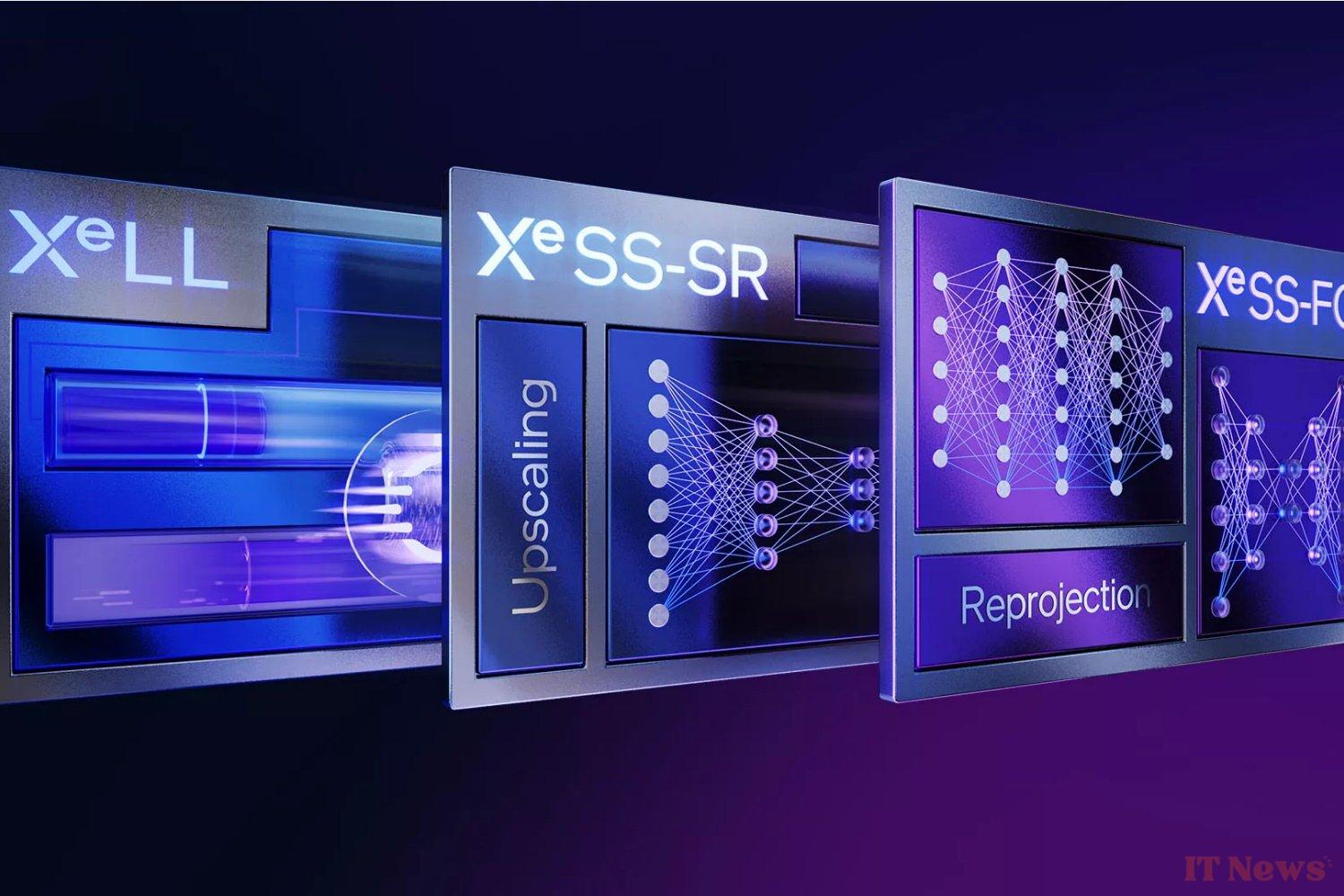AMD and NVIDIA each offer AI-assisted upscaling and image generation technologies, allowing for improved frame rates and visual quality in compatible games. Faced with FSR 4 and DLSS 4 that are significantly more effective than its own XeSS solution, Intel has been struggling until now. The manufacturer has (finally) responded by making available to developers a new version of the software development kit (or SDK) associated with this technology, improved to major reinforcement of artificial intelligence for the occasion.
Upscaling, image generation and latency reduction
Primarily intended for its Arc graphics cards, while still remaining compatible with competing Radeon and GeForce cards, the XeSS 2 practically combines three complementary technologies. The XeSS Super Resolution is the part responsible for intelligent scaling: the image is rendered in a lower definition before being upscaled to the desired definition. Different performance modes are possible, with scaling ranging from x1 (i.e. the native definition, the XeSS-SR then only serving as anti-aliasing) to x3 in Ultra Performance mode.
The XeSS Frame Generation, as its name rightly suggests, is responsible for generating an intermediate image between two real images using AI. This technology works in conjunction with the third component of XeSS 2, Xe Low Latency, to limit the impact on latency.
XeSS 2 works best with Intel's Arc A-Series and B-Series cards, as well as the integrated graphics engines in second-generation Core Ultra processors (Arc 100V Series and 100T Series). However, XeSS Super Resolution remains compatible with iGPs in older Intel processors, as well as with competing graphics cards provided they support Shader Model 6.4 or higher. In practice, Radeon and GeForce From the GCN (Radeon HD 7000 Series) and Kepler (GeForce GTX 600 Series) generations, as well as the graphics engines integrated into Skylake processors (Core 6000 Series with HD Graphics Gen9) and more recent would therefore be compatible.
Intel is finally making two plugins available to developers for the Unity and Unreal Engine rendering engines, facilitating the integration of XeSS 2 into games. This gives hope for the upcoming arrival of this technology in current titles via an update, but also for its use in major video games. come.
Source: Intel




0 Comments